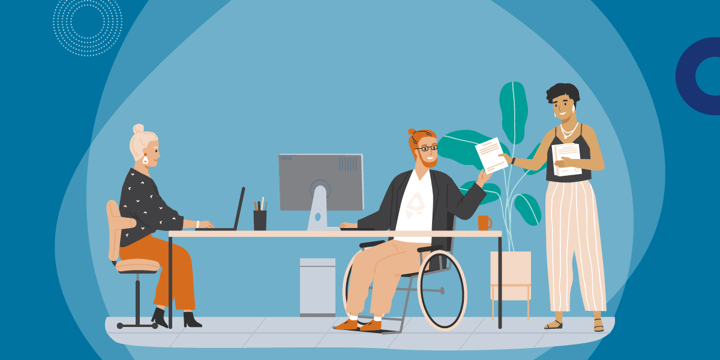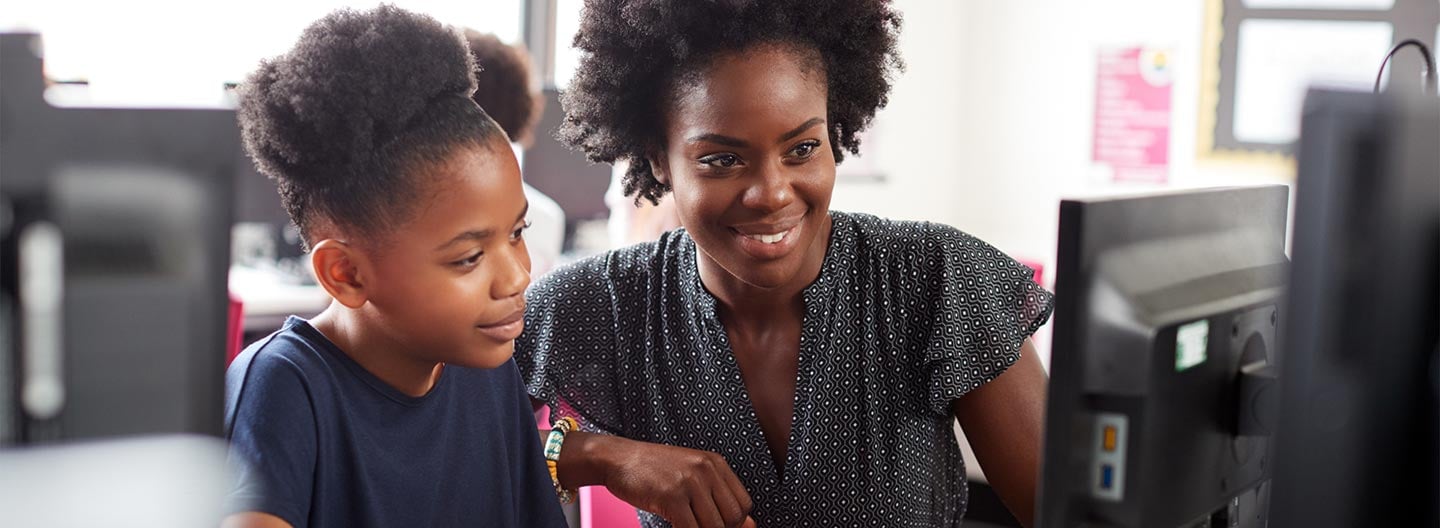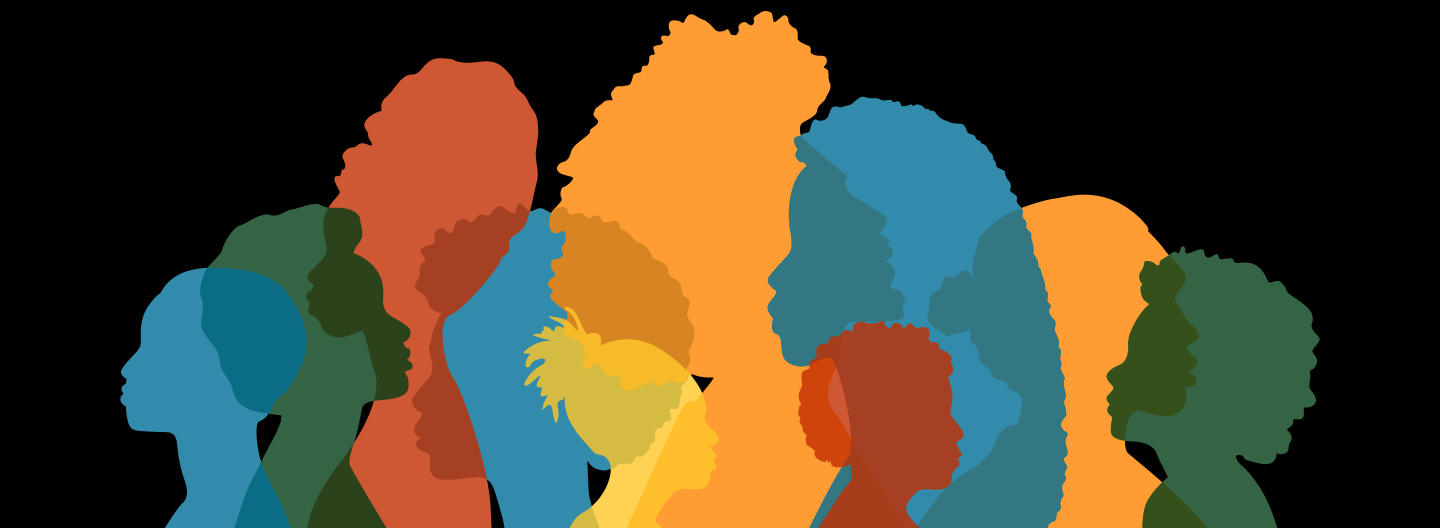Are you looking for a way to be more inclusive for individuals with disabilities at your nonprofit? This is especially challenging now that many organizations have moved their operations remote.
Since one in every four Americans is a person with a disability, it is critical that your organization ensure that absolutely everyone can participate fully in the workplace. There are a variety of ways to create a fair and inclusive workplace for all.

Why Is Disability Awareness Important?
In every community, there are people living with disabilities. But despite their being the world's largest minority, there remains a huge social stigma around discussing their diverse conditions. As a result, individuals living with disabilities can sometimes feel discouraged from requesting assistive devices and other solutions to enhance their work.
Start with Training
Employee education is a powerful tool to support people with disabilities at your nonprofit. However, it may take some coaching for personnel with little to no knowledge about disability accommodations or even unconscious bias around disabilities.
First, clearly outline your organizational disability policy in your employee handbook. This handbook should cover the basics of ADA compliance — with clear guidelines for online and in-office resources. Once you establish disability accommodations, these policies should be published in a variety of formats to ensure that they are being followed and to accommodate different learning styles and methods of understanding information.
After a disability policy has been set, strategize ways to keep this knowledge fresh in the employees' minds. Since so many nonprofits have moved on to remote work, webinars and online training are great ways to keep disability awareness top of mind.
LaCheka Phillips, program manager and director of equity, inclusion, and diversity and culture at TechSoup, says that employing individuals with disabilities is a win-win:
"A supportive, accessible, flexible work environment with proper training are the keys to having an inclusive culture for all employees, especially those with disabilities. Here are a few things you can do to implement inclusive training around disabilities:
- Secure executive-level commitment and buy-in for inclusive training initiatives by showing the impact of an inclusive culture.
- Provide training to all employees, especially people managers, on disabilities and flexible accommodations. Always be mindful to use people-first language, such as 'a person who is visually impaired' rather than 'a blind person.'
- Create a plan to help employees with disabilities identify professional development goals, using mentors or coaches to teach certain skills.
- Be sure that all training content meets accessibility standards. For instance, use UDL for employees with learning disabilities or provide materials in Braille for employees with visual impairments."
Digital Accessibility
Advances in assistive and alternative tech are boosting experiences for employees in physical as well as remote workspaces. For example, email, web, and audio conferencing can help some people with disabilities maintain relationships remotely. In addition, tablets can help users focus on tasks at hand while minimizing distractions.
When implementing any new technology solution, you can ensure its effectiveness by gathering direct feedback from users via surveys and in person. A great resource for technology is www.disabilityinfo.org. You can also check out Web Content Accessibility Guidelines (WCAG) for the latest accessibility standards for nonprofit technology.
It should also be noted that not all people with disabilities can use the solutions above effectively without additional tools, such as readers and closed captions. Still, others, like some with autism, find it even more difficult to read social cues on video calls. (They often have such issues in person, but video and the delays inherent in it make it harder.) Those with auditory processing disorders can also have issues with the video format. One way to help is to allow meetings to be recorded for review. Another would be to have specific rules and guidelines on how people interact, for example, raising hands to speak.
Inclusive Online Events
While your nonprofit may not be planning any events in person, there are still a variety of ways that persons with disabilities may be excluded from participating. There are many types of disabilities, such as vision and hearing problems, as well as neurological issues that can make online events especially difficult to navigate.
When planning an online training, webinar, or conference, provide clear instructions to help attendees prepare for registering and an overview of the accommodations that will be made. These can include sign language interpretation, implementing an image exchange communication system, coordinating live captioning, and helping attendees with assistive listening features.
Here are two webinars from TechSoup on helping attendees with disabilities at your next event.
- Digital Divide During a Pandemic: How to Work Toward Inclusion for Your Nonprofit Community
- Expanding Your Online Community with Web Accessibility
To plan out the resources needed, consider implementing a survey for individuals with hearing, listening, and other accessibility needs on the event registration form. Also, publish the contact information of a staff member who can help disabled individuals dial in to the online event, as well as safeguards to ensure that there are no technical barriers to access. Finally, make sure that there is a point person for any disabled employee who may have trouble dialing in or interpreting instructions on the day of the event.
Diversity and Talent Development
A great way to support individuals with disabilities at your nonprofit is creating a flexible environment. Do employees have the means to adjust their work hours and workstation? If not, your organization may need to sit down and formally strategize around your approach to diversity and inclusion. This flexibility is not only important for the well-being of personnel — it is covered under the Americans with Disabilities Act.
Build a diversity and inclusion committee, appointing key leaders and project managers to participate in special events to build awareness and boost accountability. These individuals can include persons with disabilities as well as disability experts.
Cultivate talent from the ground up, nurturing staff as well as volunteers and upper leadership who have disabilities. If you have a sizable interest, designate an employee to communicate with leadership on further accommodations that may be needed.
Here are tips on how to keep diversity, equity, and inclusion (DEI) habits up across your remote workforce from TechSoup. You can also get assistance from TechSoup's Website Services and Help Desk Services.
Including diverse perspectives in your operational materials is only one aspect of clearly communicating that your organization is inclusive of individuals with disabilities. Implement the stories of staff and other stakeholders within a range of marketing and communications outreach materials — showcasing their accomplishments in the workplace and their daily lives.
Workplace Communication
During daily interactions, staff should avoid ableism (discrimination in favor of people without disabilities) at all times. The golden rule is to ask how a person wishes to be identified and how they would like co-workers to accommodate to their needs.
For example, some individuals may avoid eye contact or seem anxious. Do not take these reactions at face value. It may take some time for employees to get comfortable enough to share their personal experiences with disabilities. And others may simply not want to make any mention of them. Whatever their preferences are — respect them.
Another word of advice is to avoid assuming that individuals have a disability, or worse. Encourage personnel to avoid using outdated and potentially offensive terms, such as "crippled," "special," "abnormal," or "handicapped." As a rule of thumb, adults should be treated as adults. Use a respectful tone of voice at all times and listen intently without presuming competence. This includes avoiding baby talk and using an indirect tone when meeting or referring to any individual, regardless if they are perceived differently.
Nonprofit organizations — and civil society at large — are in many cases dedicated to making the world a more just and equitable place for all. And thanks to advances in technology and perspectives, they can make sure the workplace is a space where everyone can thrive, too. Take the time to invest in improving the environment at your organization for those living with disabilities today.









